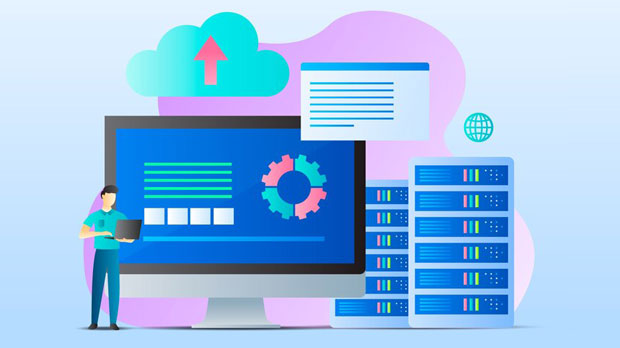In the era of digital content streaming, access to platforms like Netflix, Hulu, and Disney+ has become a staple for entertainment. However, due to geographical restrictions, users often find themselves unable to access certain content from different countries. One solution that has emerged is the use of residential proxies. These proxies, which route internet traffic through real residential IPs, promise to bypass regional blocks and provide access to global content. But can cheap residential proxies really unlock these streaming platforms? In this article, we will explore the effectiveness of cheap residential proxies for unblocking streaming services, their pros and cons, and what you should consider before relying on them. Understanding Residential ProxiesBefore diving into whether cheap residential proxies can unlock streaming services like Netflix, it’s important to understand what residential proxies are. Residential proxies are a type of proxy server that routes traffic through IP addresses associated with real residential locations, as opposed to data center IPs. This makes residential proxies appear as regular users browsing the internet from a specific geographic area, rather than coming from a datacenter that may be flagged by websites for suspicious activity.These proxies are often more difficult to detect than standard datacenter proxies, which is why they are sometimes used to bypass geo-restrictions. Residential proxies essentially mimic the behavior of an average internet user, which makes them harder for streaming platforms to block. However, the effectiveness of cheap residential proxies, especially in the context of services like Netflix, requires further investigation.Why Streaming Platforms Block ContentStreaming platforms like Netflix, Hulu, and others use geo-restrictions to manage content licensing agreements. Content producers and distributors often license shows, movies, and other media to different countries or regions. This means that the availability of content can vary significantly depending on where a user is located. To enforce these restrictions, streaming services use various methods, including IP address detection, to determine the geographical location of users.For instance, Netflix offers different libraries of movies and TV shows in the U.S., U.K., Japan, and other regions. These regional variations are often tied to distribution rights and international contracts. As a result, Netflix and similar platforms deploy sophisticated anti-proxy mechanisms to prevent users from circumventing these geographical boundaries.The Potential of Cheap Residential Proxies for StreamingWhen it comes to using proxies to access restricted content, cheap residential proxies offer a tempting solution due to their apparent affordability. They are marketed as tools that can provide anonymous access to content from other countries by routing internet traffic through different geographic locations. But how effective are they in practice?1. Circumventing Geo-Restrictions Cheap residential proxies can, in theory, bypass geographic restrictions by masking the user’s true location and making it appear as though the user is accessing content from a different country. However, Netflix and other streaming platforms have become increasingly adept at detecting and blocking proxy traffic. While residential proxies are harder to detect than datacenter proxies, they are not immune to blocking, especially if they are cheap or low-quality proxies.2. Reliability of Cheap Proxies Not all residential proxies are created equal. Cheap proxies, especially those from unreliable providers, may have poor performance and low success rates when it comes to unblocking streaming services. They might be part of a proxy pool that is overused, leading to slow connection speeds, poor streaming quality, and frequent disconnections. Additionally, many streaming platforms actively monitor proxy servers, and cheap proxies may be flagged or blacklisted more quickly than higher-quality, premium proxies.3. Latency and Speed Issues Another issue with cheap residential proxies is latency. When streaming high-definition video, low latency and fast internet speeds are crucial to avoid buffering and poor-quality streams. Cheap proxies often come with reduced speed and higher latency, which can negatively affect the user experience when trying to stream content. This could result in frustratingly slow load times and interruptions during playback, making it less enjoyable to use.The Risks of Using Cheap Residential Proxies for StreamingWhile residential proxies offer potential benefits, especially for users looking to bypass geo-restrictions, there are also significant risks associated with using cheap proxies for streaming.1. Detection and Blocking by Streaming Services As mentioned earlier, streaming services like Netflix have become experts at detecting and blocking proxy traffic. While residential proxies are harder to detect than datacenter proxies, cheap proxies are more likely to get flagged and blocked. Netflix, for example, has implemented advanced techniques such as IP fingerprinting and machine learning algorithms to detect patterns that suggest proxy usage. If streaming platforms detect suspicious activity, they may block the proxy ip, causing the user to lose access to the service.2. Legal and Ethical Considerations Using proxies to bypass geo-restrictions may also raise legal and ethical issues. Many streaming services prohibit the use of proxies in their terms of service. If caught, users could face account suspension or banning, which would prevent them from accessing their content entirely. This makes it crucial for users to weigh the risks of using cheap proxies against the potential benefits of accessing geo-restricted content.3. Security and Privacy Concerns Cheap residential proxies may not offer the same level of security and privacy as premium alternatives. In some cases, users might expose themselves to data theft or surveillance if they are using proxies from unreliable sources. Cheap proxies are often run by smaller, less reputable providers, and they may not have the necessary security protocols in place to protect users’ personal information.Is It Worth Using Cheap Residential Proxies for Streaming?The question of whether it's worth using cheap residential proxies to unlock streaming services like Netflix largely depends on the user’s priorities. While they offer an affordable way to bypass geographical restrictions, cheap proxies often come with drawbacks such as poor reliability, low speeds, and the potential for detection by streaming platforms. For those looking for a smooth, uninterrupted streaming experience, it may be worth investing in higher-quality residential proxies or exploring legal alternatives like VPNs specifically designed for streaming.For users who only need occasional access to geo-restricted content and are willing to accept the risks of lower performance and potential detection, cheap residential proxies may still provide a viable solution. However, for those who value security, reliability, and uninterrupted streaming, a premium proxy or a well-established VPN service might be a more suitable choice.In conclusion, while cheap residential proxies can technically be used to unblock streaming services like Netflix, their effectiveness is often limited. The risks associated with using low-quality proxies, such as detection, poor performance, and potential security issues, make them less reliable than premium options. Users who want consistent and high-quality access to global content should carefully consider the trade-offs between cost and performance before deciding whether cheap residential proxies are the right solution for their needs.
May 19, 2025






















































